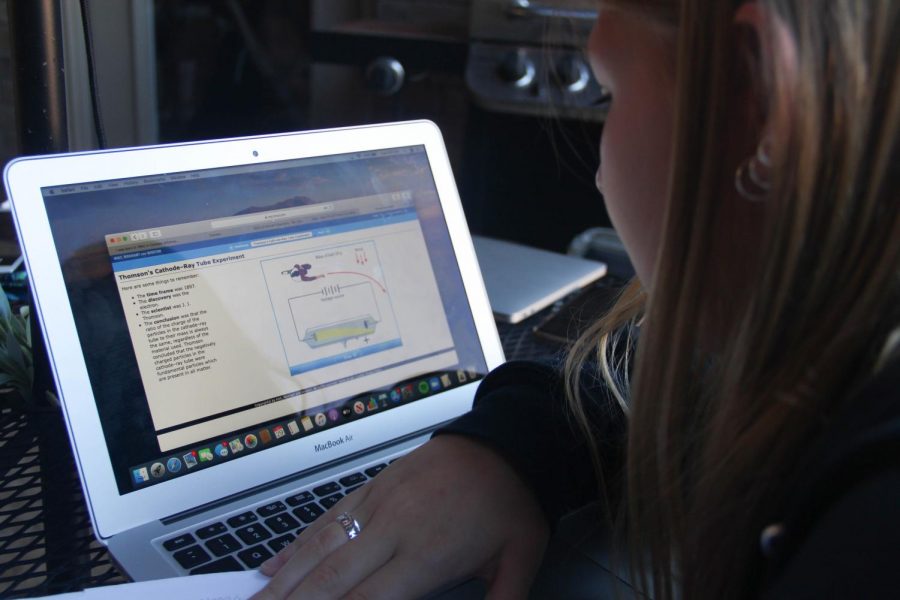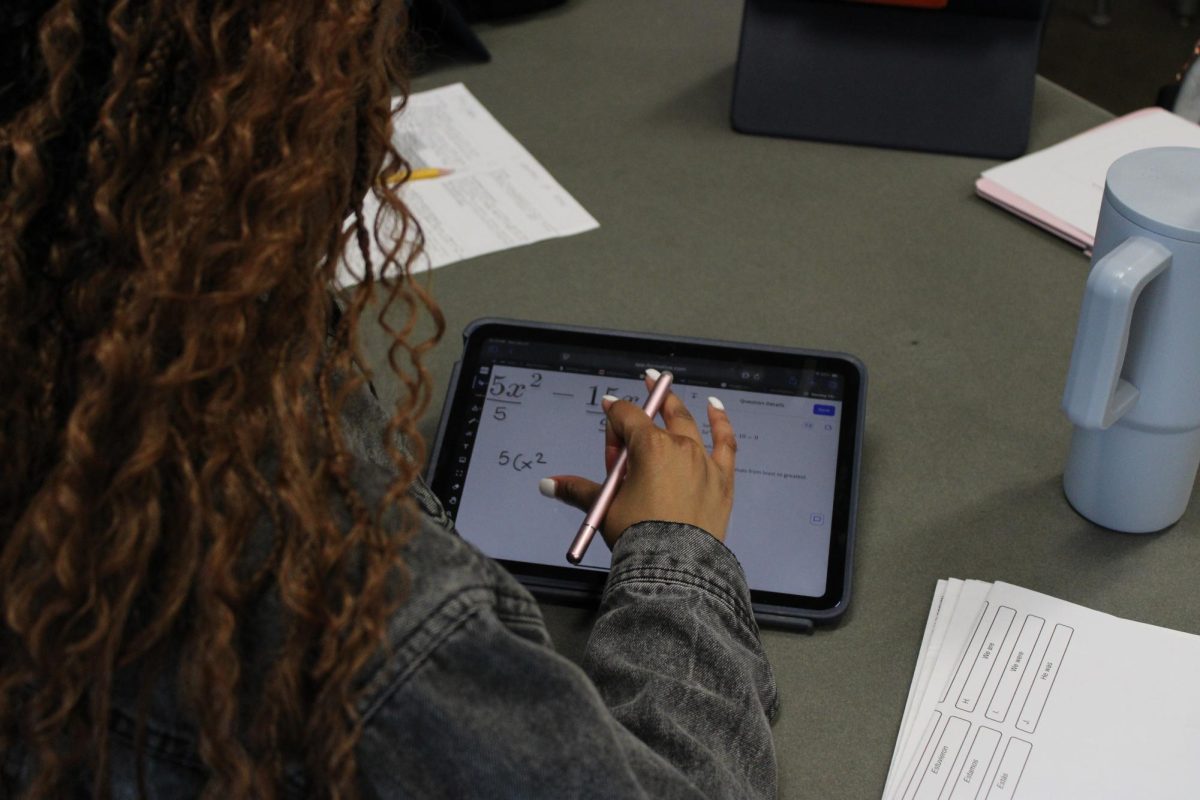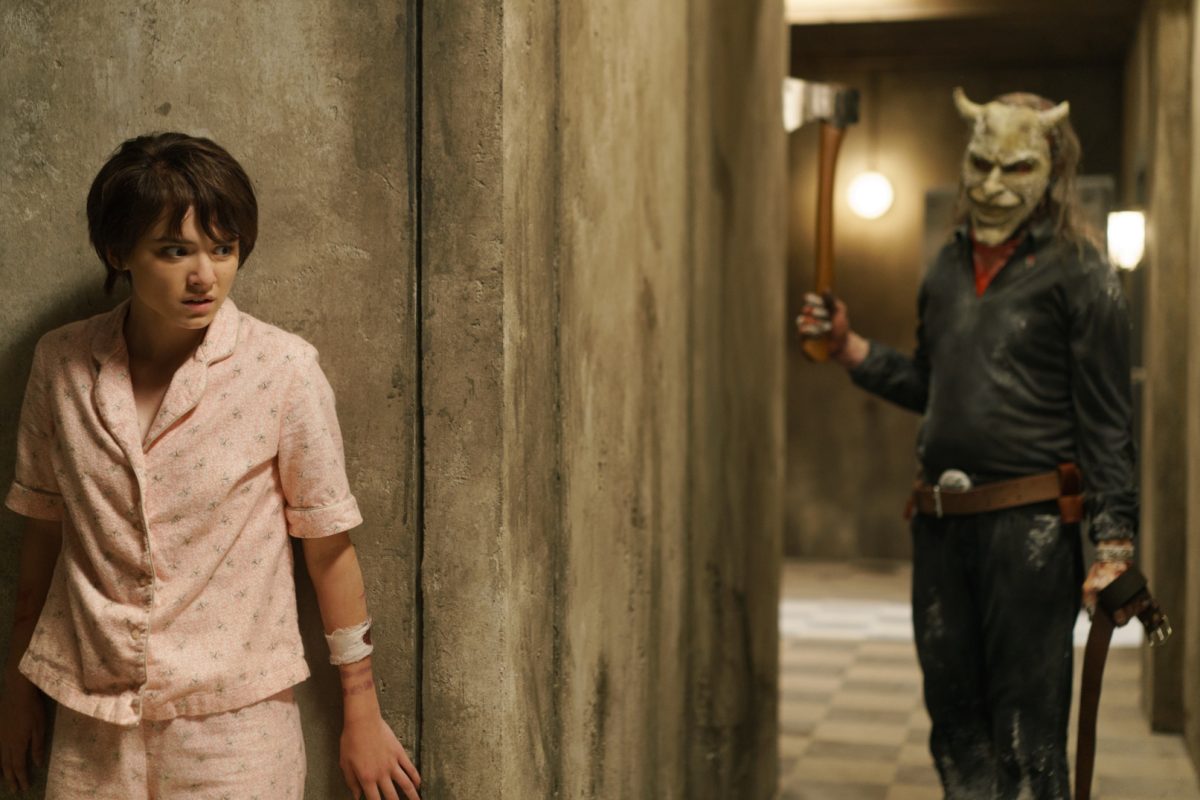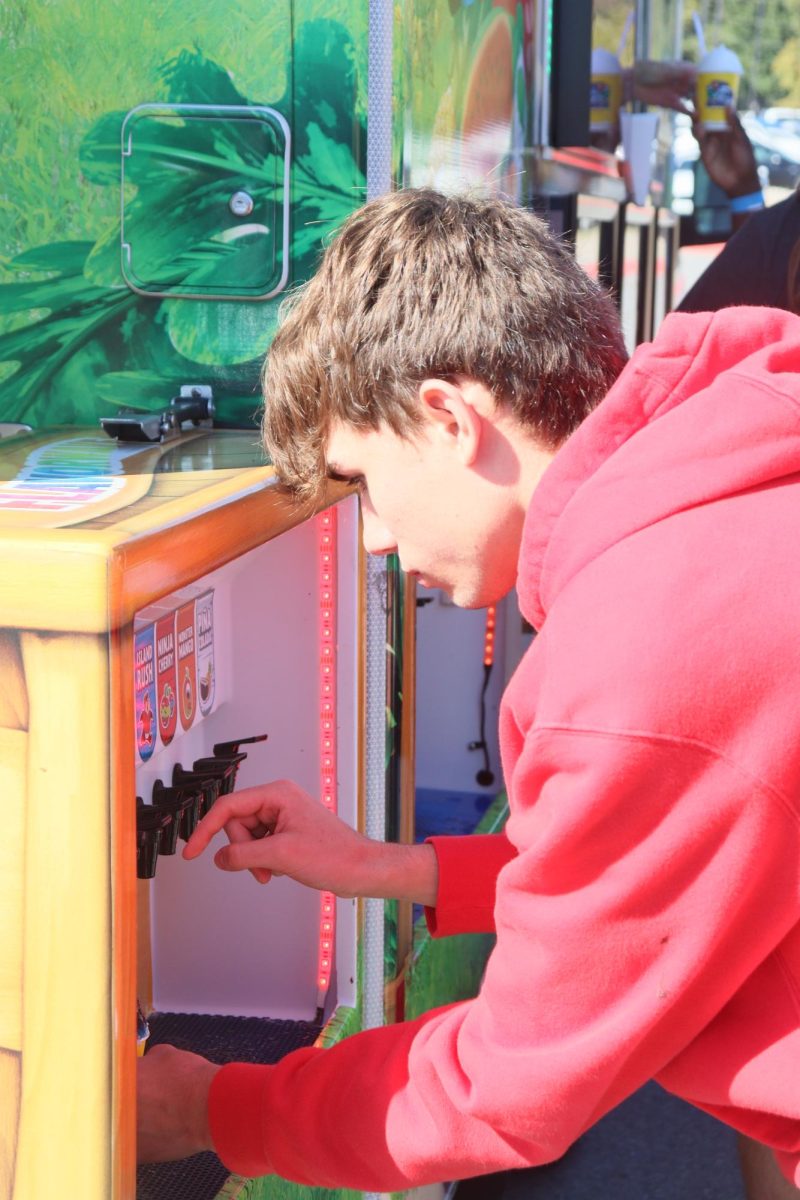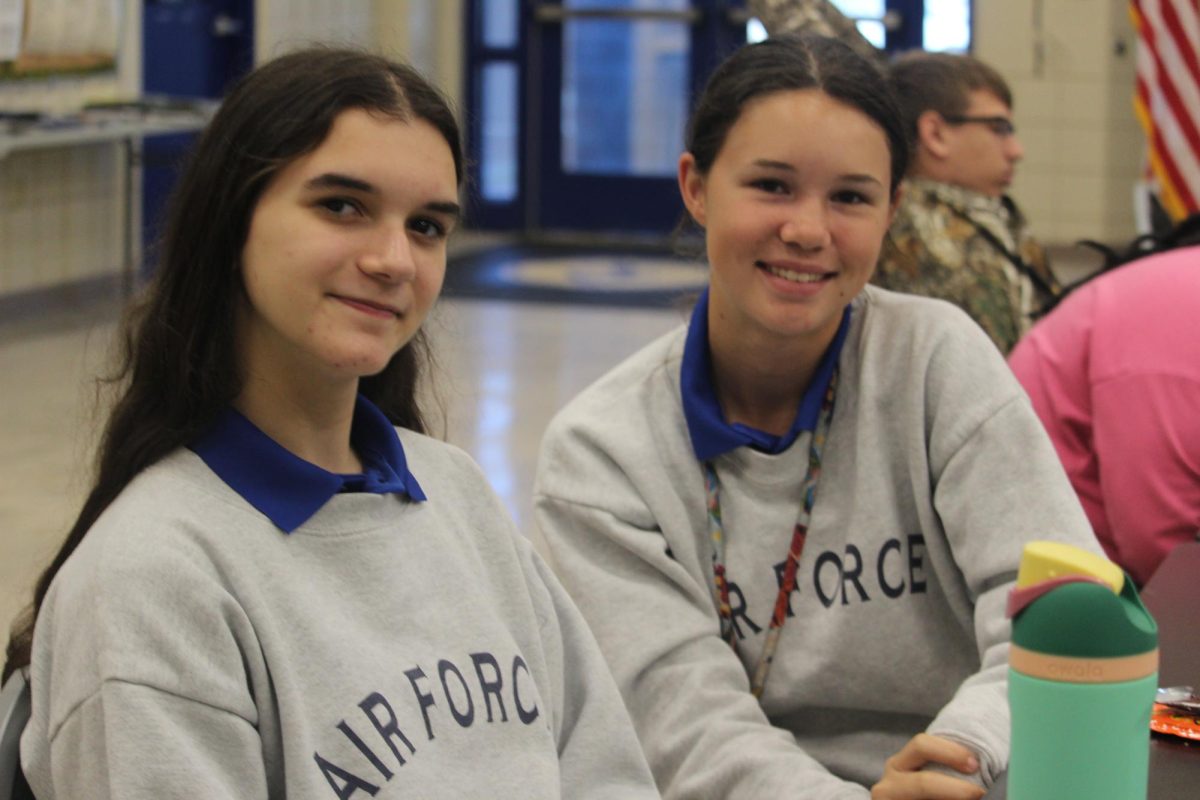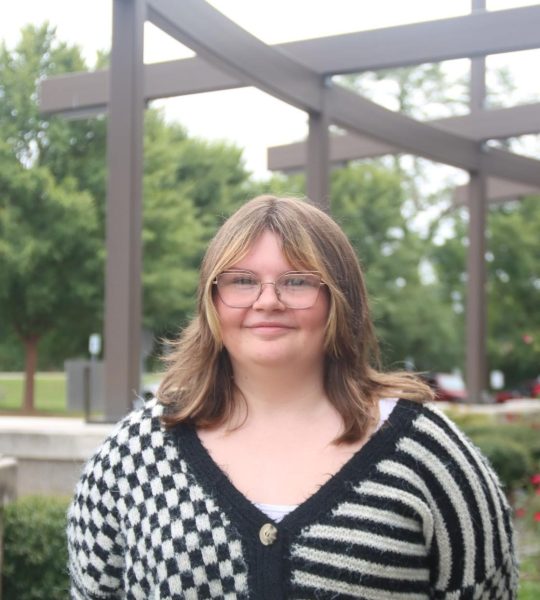Wired Learning
Students, teachers face changes due to COVID-19 pandemic
Zooming, junior Brooklyn Dunn works on an assignment for her 6th period integrated Pre-AP chemistry class. Dunn chose virtual learning for this school year.
November 13, 2020
Students wear masks, do all their classwork digitally instead of on paper and Facetime their friends in the hallway instead of talking in person. With the new COVID-19 regulations, education has gone through drastic changes to give students more options for learning.
Students have the option of virtual learning or blended learning. Virtual learning consists of teachers having a class period dedicated Zoom calls with students, and blended is on campus.
The new regulations for this year have caused AP World and AP Government & Politics teacher Will Heatherly to not feel as close to his students as he usually is.
“It is really hard to teach students when you can’t make a personal connection with them,” Heatherly said. “It is hard to tell on a Zoom call who is having a good day [and] who is having a bad day. It’s hard to have conversations about things that are non-academic that you use to build relationships with people.”
With virtual learning, the amount of personal interaction with students is limited.
“You only see what the student allows you to see, and in some cases, most students in the class have their cameras off,” Heatherly said. “I can make them turn them on, but I also know that if I do that, I am putting them in some place that makes them uncomfortable, because there was a reason they had their cameras off.”
Although the long-term effects of online learning have not been documented yet, sophomore Ember Magness feels as though her experience has not been beneficial. Magness chose to be a blended student, but after being identified as a close contact for someone who tested positive for COVID, she had to be quarantined for 14 days.
“I did not have any struggles with learning the information [while I was at home], but I don’t think I retained any of it,” Magness said.
Although she was able to work on assignments from home, the workload for Magness was more than she expected and was a bit hard to follow.
“I prefer [in-person] school, because I know I am getting all the information that the teachers say in class that may not be included in instructions,” Magness said.
Virtual learning has limited some extracurricular options for students. Students such as junior Abbie Carlton had to adjust to the on-campus schedule.
“Virtually, they don’t offer every class,” Carlton said. “In order to take the classes that I want, I have to come on campus for that.”
With the switch to having online classes and working more with technology, biology teacher Suzanne Johnson has had to gain new skills to advance the way she can teach online.
“Technology has grown [for me] 4,000 times since the last six months,” Johnson said. “Now I feel pretty comfortable, even [with] some of the other platforms that I had never used. Students are not the only ones having to learn and adjust to this new learning technique. I feel much more tech savvy than I ever have.”
For virtual classes, teachers must post assignments for their students to do after going on a Zoom call for attendance and instructions. Magness says that some students may have extra questions about their assignment, but do not feel comfortable enough to ask during their meetings.
“I think online learning could be improved by strengthening the communication through teachers and students and giving explicit instructions for the online students since they are not able to hear any questions asked in class for clarification,” Magness said.
Johnson thinks that teachers need to help prepare students to be able to effectively learn online.
“I think that one of the big struggles [with] moving to virtual is allowing students to have their independence,” Johnson said. “In the future, we have to build in some kind of system to build up that confidence and those strategies in students. I think we are going to need to do a little more instruction to the kids as to how to do things independently instead of having somebody there, an immediate person to ask questions to.”


